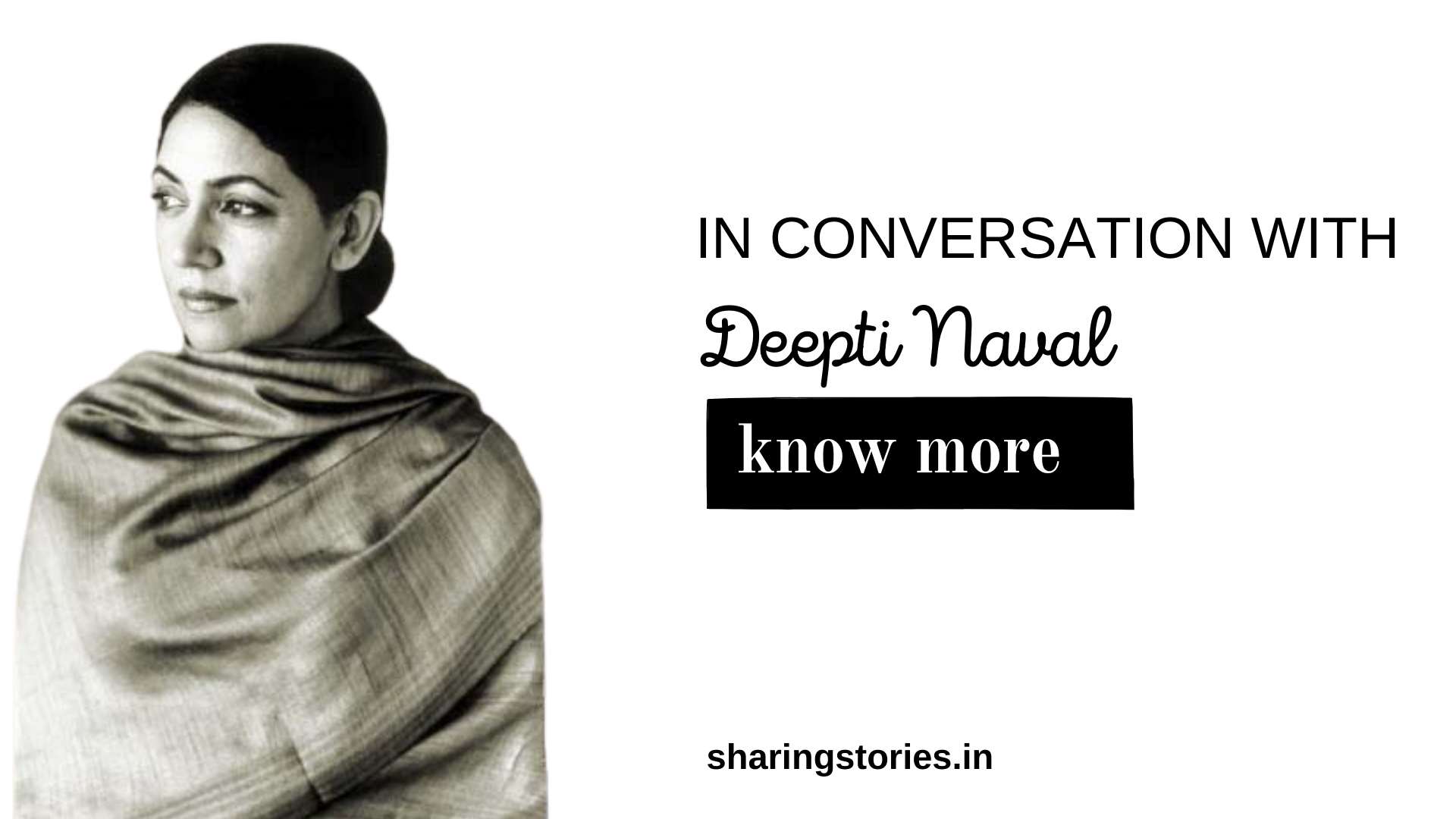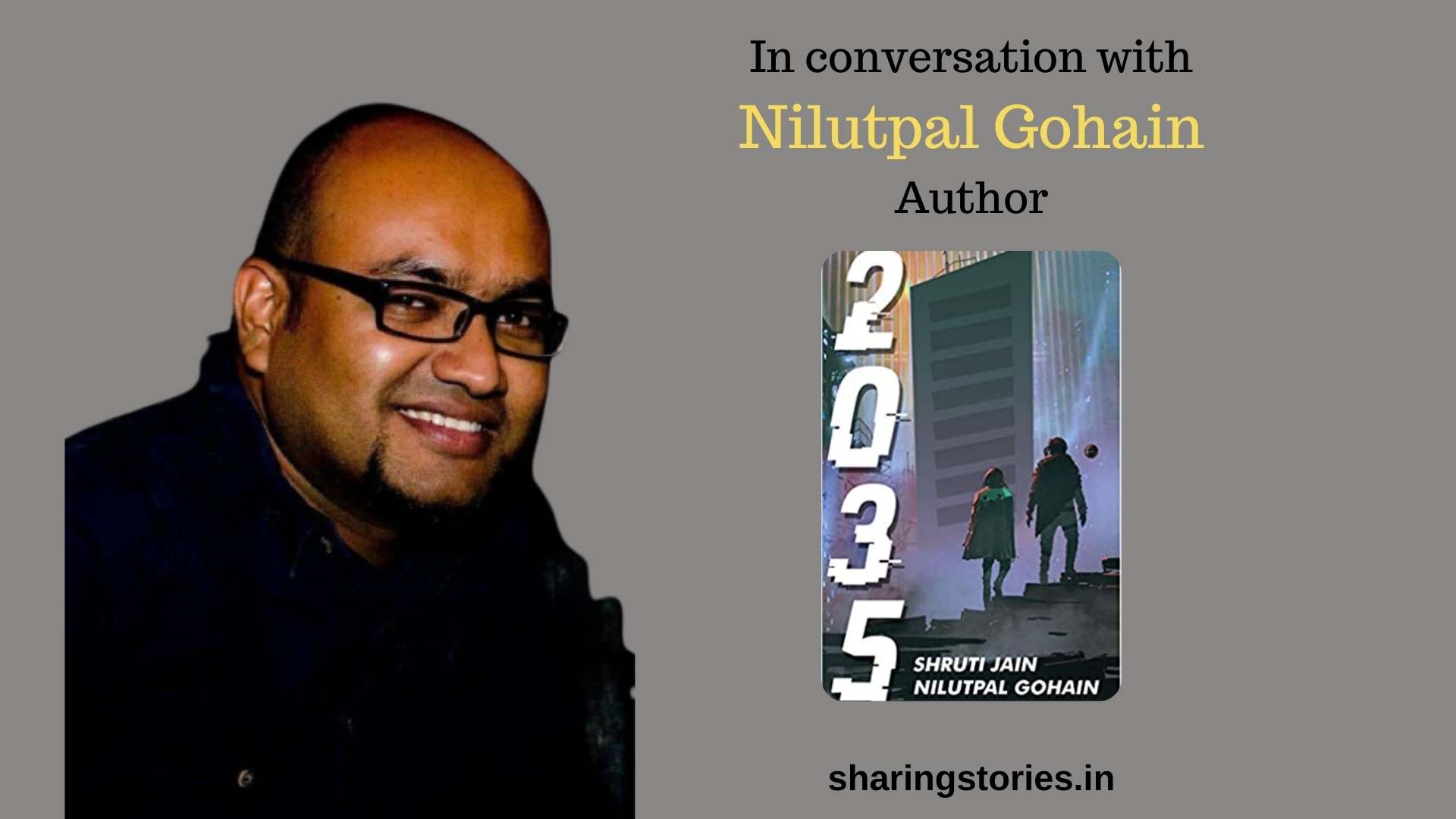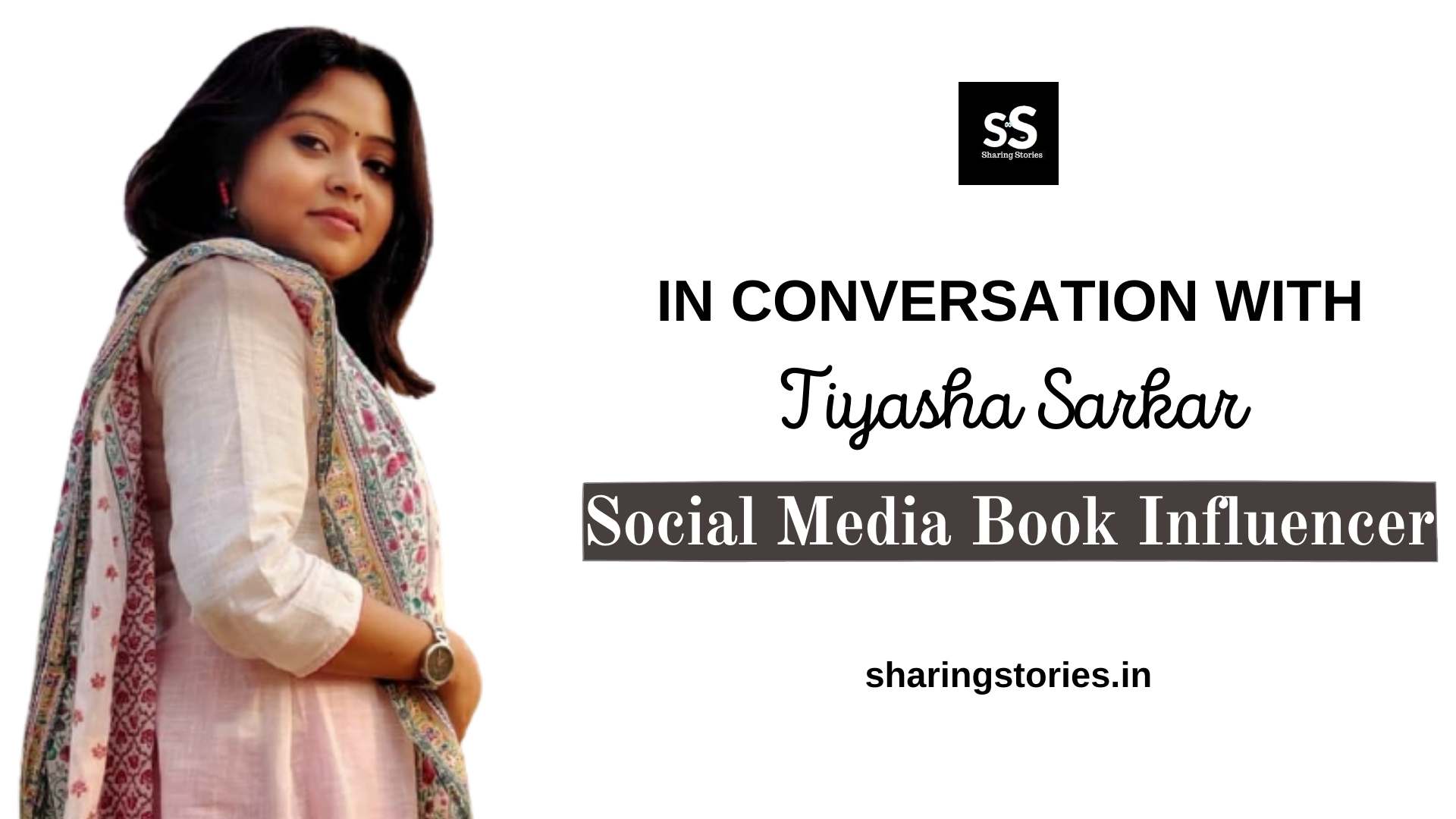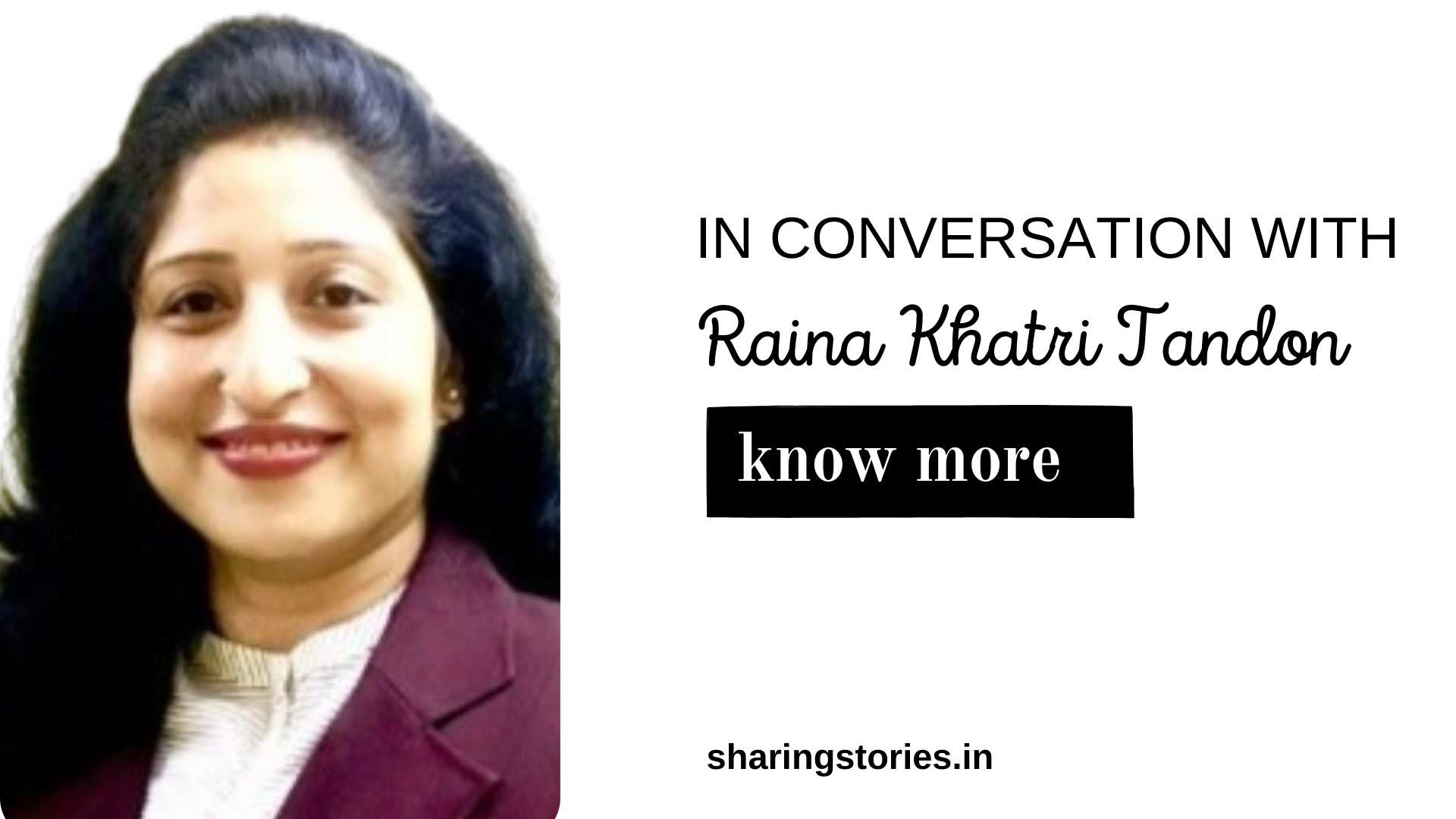
As a painter and a writer, you seem to be innately observant. Being a highly dedicated actress, how did you manage to pick up your stories in between the tight schedules of your work? Did you jot down the stories in bits and pieces and later work on them to present them in this mesmerizing collection ‘The Mad Tibetan?’
First of all, I feel when you think about writing a book, it is something you don’t decide instantaneously whether it is going to be a romantic novel or short story collection. It is a matter of your own choice that takes time. When I decided on writing the book, ‘The Mad Tibetan’, I thought that I do have a couple of stories to share with the world outside.
‘Thulli’ was the first story that I wrote. ‘Thulli’ was already there in the form of jottings in my diary. It was an autobiographical account. I visited the red-light area of Kamathipura for doing a bit of research for my role in a film. I was accompanied by my director and another colleague. There were scribbling and points about it in my diary.
I and my publisher were in discussion about doing a book for a long time. However, we never zeroed upon what kind of book it would be. Earlier, I thought that my publisher wanted an autobiographical kind of thing to be done. But then she insisted that for the moment autobiography could wait for some more time, as autobiographical work required a lot more time and detail. That’s when she suggested to me about writing some short stories which could be quick…
I had a huge amount of poems lying around, unpublished. But I had not written a short story ever. I pondered upon and recollected the events which I wanted to narrate as stories. I made a list of incidents that could be turned into some interesting short stories. ‘Birds’ is one story that is completely lifted from my diary. It is even written in that manner, just like a diary piece. And then there were a couple of incidents narrated by my friends.
‘Sisters’ was narrated by a friend. It was her childhood experience and I decided to write it down in the form of a story. Then ‘Premonition’ was an experience which an assistant director shared with me. How in a backhanded manner the tragedy happens when it has to happen. He gives up one bus and boards another one out of fear of a premonition of an accident. Yet, it is the second bus that falls in the river. It was an eerie experience and I picked it up.
I could relate to these incidents. ‘Sisters’ is placed in Jugindernagar, Palampur, which I could relate to. Only one story, ‘Morning After’ is purely fictional. Ruth Mayberry was a close friend of mine. I wrote about her life in a short story. She used to discuss her script with me. In Manhattan, we would go to this fancy bar and she would tell me about her experiences with the producers. I remembered her words vividly how frustrated she felt when two young men would constantly say ‘awesome’ while listening to her screenplay.
Once I decided, I started with five-six stories. The rest of the stories were gradually developed. ‘D’ is another autobiographical incident. Daman was an old friend and I couldn’t figure out her name at that moment in the middle of Janpath in Delhi. So these incidents got converted into stories.
I made little jottings. I wrote mostly by remembering. I strongly visualize while writing. It’s not simply a narration for me. For me, it is seeing through the words. The friends who shared the incidents, I visualized the whole thing.
For Thulli, I wanted to take the reader with me and see everything. I had to do a lot more work on Thulli. I revisited the place with Tanvir, the movie director with whom I had gone there earlier. I had to jot down lanes, cinema hall, road, Dilli Durbar. The cages were not there anymore. The cages existed in the ’80s during my earlier visit. The memory is still vivid in my mind. And I put all of it in my story.
Notes help a lot. Sometimes a single line can be a whole story. The Morning After is a three-line story. A woman goes to gives the due to the illegitimate child of her husband and comes back with a child for herself.
So this is the way the whole collection, ‘The Mad Tibetan’ was done.
Each story of yours in ‘The Mad Tibetan’ stands out for itself. Why you particularly chose the story ‘The Mad Tibetan’ as the title of the collection?
Every story in ‘The Mad Tibetan’ has a different environment. I see the mad Tibetan as somebody who has got nothing, yet he lives joyously. He lights matchsticks in blizzards. He would be lying low erstwhile, and as soon as the storm struck he would light match sticks in the winds…like for him it was a sheer delight to keep on hanging against the wind with the spirit – ‘See here I am again.’
I was overwhelmed by this spirit of his.
It was this madness in him that got me. There was a joy in his mere existence. I was the photographer and he was my subject and he got this very soon. He was smart in that sense. I used to be scared of noises that he made during the night hours. Making all weird noises out of the old tin boxes. For once, I thought the place was haunted. As I used to come out and look around, I would find him sitting outside the window, peacefully. Here he was, sitting with a smile on his face. Looking at his innocence I realized here is a man who lives with the whole of joy and spirit amidst nothing. That ‘mad Tibetan’ stood out in my mind and became the title.
Your stories tend to showcase the delicate threads of a relationship without even being preachy. Be it, ‘The sisters’ which depicts the plights of a difficult childhood, or ‘The Morning After’ which has the essence of acceptance, ‘D’ which describes overwhelming helplessness. Are these inspired by real-life persons? As a story-writer, should one maintain a detachment towards the character that he/she weaves or should try to get totally immersed in the emotions that a character goes through?
I don’t see how technically the writers are advised to write. I cannot write unless I put myself into it. I write after putting myself into the feeling. For example, in Thulli, I had to put myself into the mindset of her. She was the ‘madame of the brothel there and I was a new actress doing some research. Suddenly a big fat pimp arrived, who was in an intoxicated state. Thulli was trying to turn around her relationship with this pimp to save this young girl, which was me. I am trying to escape. She was trying to coax him away from me. She is ready to give herself to him.
Thulli in Nepali means ‘didi’, elderly sister. But at that moment she was ready to go to any length to save this young actress who had come to do some research for a role.
I had to go through all the feelings of the desperation of Thulli in those moments to write down the whole experience. So, I must say, I write by deeply getting into the story and the feelings. That’s the only way I can write.
‘Thulli’ is a story that moves the readers to the core. While researching for the role of a prostitute, you went ahead to explore the dark realities of Kamathipura and other red-light areas. Did the experience drain you emotionally and writing it down help?
Yes, indeed. Writing it down gave a sense of relief. Whenever you go through an experience, especially a difficult one, there is always a burden that you carry along with yourself. And when you finally share that experience with someone, the burden is relieved. Thus, writing down ‘Thull’i was cathartic for me.
Writing is sometimes the art of offloading. The experience which you went through… you can share it with people outside. A story that needs to tell is now out there in a written form. People read it, sometimes they relate to it on a personal level. It gives another perspective to it. When other people are resonating with your written words, it is the finale of the story.
The whole process of writing is healing, therapeutic, and cathartic. In the case of Thulli, I can say that writing it down gave it a proper closure.
You are truly an artistic soul. You have expressed yourself through the medium of paintings, photography, cinema, screenplay-writing, director and writing. Which medium is closest to your heart and gives you unbiased liberty to open up the deepest chords of your thought process and emotions?
It is writing, of course. Writing is closest to my heart. Because writing is my solo work. It comes out solely from my mind. If people relate to it, it is a direct connection with me as a person. The writer is the real you. The one you are, the things you feel and observe as a person. I am glad that my writing is getting recognized now.
Earlier, it was like…oh the actress who also paints and writes. But because of this larger image as an actress in front of the camera, it takes you over, the real person gets hidden behind. The writer in me got overshadowed by my acting career.
In the process of moviemaking, a lot of people are involved. There are directors, dialogue writers, musicians, makeup artistes etc. The whole movie is recognized as a collective effort.
As a writer, you have only yourself. The relationship with the reader becomes more intimate.
There is no one else between you and your reader. Writing is something that definitely resonates with me as a creative person.
You have portrayed some of the most challenging and pathbreaking female characters in your movies, for example, ‘Chirutha’, ‘EkBaarPhir, ‘Ankahi’. For ‘Ankahi’, to study the role you even went to an extent of staying and spending time with inmates of a women’s mental asylum for 23 days. Your published collection; ‘Black Wind’ has some poems which have reflections of your stay and experience. In your afterword you have quite poignantly mentioned how this experience altered your perceptions, and also a line – ‘Madness was addictive’ regarding these inmates. Can you please share a bit about the experience with our readers?
Yes, I stayed there and did my homework for the role. Initially, I decided to go and stay there only for two to three days for the study of the role and my homework. However, it extended to weeks.
I ended up spending around more than three weeks. But the extension did not happen only for the role in the movie. During my stay there, I started writing another script altogether. That made my stay go on and on. I didn’t felt like coming out of there. The reason being, the amount of sensitivity I could feel in there.
Everyone over there seemed to be super-sensitive and very real, far away from the drama and superficiality of the outer world. There was a different kind of emotional depth in there. I used to miss this depth and sensitivity in the outside world. The inmates made me see a totally different perspective of life.
I am not glorifying the mental ailments. I know people out there are suffering and going through a miserable life. They need medical attention and treatment. However, the real world is highly insensitive. People are running around after materialism.
This sensitivity drew me towards the asylum study intensely and hence the line,
‘Madness is Addictive’
Though the script I wrote there never saw the light of the day. It was deemed too dark as a subject. But I want to do something with it. I am surely going to do some work on it…Maybe a book or a movie.
In the collection, ‘Black Wind’, one particular poem – ‘The Lunatic Is Out on The Wall’ depicts the raw pain, grief and plight of a woman who suffers in a mental asylum. What was the trigger factor behind writing this poem? Do you feel that life for these inmates can ever be normal or stigma-free even if they are cured or taken back by their families?
Yes, during my stay in the asylum, I have witnessed some really gory things. I have seen women who were not in their senses; they were drugged and given electric shocks.
One night, when I was in the staff quarter, that’s where I used to stay, I was unable to sleep. Suddenly I saw some movements. Generally during the nights, the inmates are locked inside and aren’t allowed to move around. I saw a woman being dragged and taken around at the far end of the wall. She was not in her senses and I could well imagine what plight she might have undergone. These kinds of incidents made me feel their pain and trauma intensely and triggered me to write this poem in two parts – ‘The Lunatic Is Out On the Wall I &II.
These inmates are stigmatized for life and from close quarters, I have seen that nobody wants them back, even if they are cured. There was one girl, who was treated and sent back home. But soon she was back in the mental hospital in much worse condition. At home, she was tortured and never allowed to forget her past. She was never accepted as a normal member of the family or society.
I have seen a lot during my stay. I have lived with the plight which they undergo. Our society is yet to accept mental disorders as any other health issue. People around these women stamp them as ‘mad, crazy, and lunatic’ for life.
I have also seen that some women are sent by the family members if they find the girl or woman a burden. If a husband wants to marry another woman, he would conveniently get a medical certificate of the lunacy of the woman and throw her out. There have been cases where girls have been sent there as they couldn’t fulfill the demand of dowry. All this moved me to the core.
We need to make people aware of mental health. There has to be a spread of literacy around this topic. This is what I am talking about in the era of the 80s. Sadly, I don’t see much change to this date.
In the foreword to your poetry collection, ‘Lamha- Lamha’, Gulzaarji mentions that he can find two Deepti Naval while reading the poems; one Deepti is observing the other with a detached state of mind and after a point, these two merge to form a perfect picture. Do you perceive your poems as an extension of yourself or they are a separated entity in themselves?
‘Lamha- Lamha’, I can say is a phase of my life…a young poetess within me who had romantic ideas about life. It is that kind of phase when there is a romanticism about loneliness too.
As a person, I hadn’t confronted the hard realities then, yet somehow drew imaginary ideas about deep philosophies of life. It was a beautiful phase of writing. There was a lot of romance about life…like dil bhi tuta that; lekin farzi wala. And I was able to write about those romantic ideas and hard-hitting realities which I was yet to face.
But again, such romanticism shows how fine-tuned you are about life. I have always lived life in depth. From the very beginning, I used to feel and observe things around me deeply. Maybe, I was born with this acute sensitivity.
Now, I see life in two phases, Lamha- Lamha where I penned my feelings about how life could be. But, when life actually happened, I realized the realities are way different from my ideas. This maturity culminated in my later collection, ‘ The Black Winds.’
There is another collection that is under publication –‘River and I’ which defines this thought perfectly. This collection is deeper, introspective, kind of looking back and analyzing the varied experiences of life. Like, when you have come out of all the ups and downs and disturbances and look at the complete picture from a distance. It gives better clarity. There you are ready to sum it up all.
Which is your favorite poem from ‘Lamha- Lamha’. Please share a bit of background about it.
Yes, there are some of the poems in Lamha- Lamha that are really close to my heart. In fact, the very first poem of the collection, ‘Chalo Door take is a personal favorite.
Another poem that I wrote back then, stands still very much relevant today. It is, ‘Pooch baith ta hai koi jab’. It is a Nazm that I wrote addressing the people belonging to all religions. It is addressed to human beings. It is sad to see that religion is something that has been turned into a weapon these days.
And that’s why I feel that this poem is relevant even today. Though, I am disappointed that it is relevant even after so many years. Things haven’t really changed or have gone to worse, if I may say so.
“Registhan ki Raat hai” is another favorite.
The part of ‘Lamha- Lamha’ tilted as ‘Yaha se Naggar Tak’ is close to my heart. It describes the beauty and peace of mountains, which I have made my abode nowadays. The places around Naggar- Kasol, the poems depict the serenity of this area and local flavor too.
We would love to know more about you as Deepti Naval as a person in real life. Can you describe/outline your typical day? Please tell us something about your likes dislikes.
I am an early riser and I live a real simple life. I can say that there is nothing dramatic about DeeptiNaval’s daily life.
I wake up around 5.00 AM. Earlier it used to be 4.00 AM. I have now pushed it one hour later. The first thing in the morning I need is my ‘chai’. With a cup of tea, I write for the next couple of hours. Since I am working on something, these days my morning hours are mostly spent in writing.
Around a quarter to seven, I go for a brisk walk at Silver beach, Juhu which is near to my home. When I am staying in mountains, I spend this time in the Deodar forest, walking amidst the pine trees.
On some days, I carry my laptop with me to the beach. There is a coffee shop called ‘Silver Beach café’ which opens around 7.00 am. I go and sit there writing and have my breakfast too.
After my walk, it’s time for breakfast at home and some exercise. During the daytime either I am writing or on a shoot. In between the shots, I am inside my vanity van typing on my laptop and writing. Most people use these breaks to chit-chat and relax a bit. I prefer using this time to write.
I do enjoy my time with some of my close friends. My life runs between Mumbai, Himachal, and New York. I live in between these three places. I go out with my friends for quiet dinners and quality time.
I avoid crowded places. I try to find places where lots of people don’t come. Hence I can be spotted mostly in quiet restaurants or café.
For entertainment, I watch Netflix. Though, I am not much into movies or TV serials. I love watching documentaries. The subjects which raise the curiosity in me, I search them and watch documentaries about them. Also these days, I am listening to audiobooks. I try to multitask. Like what more can I do at the same time?
Like I do my singing riyaz while taking a walk.
I cherish my me-time. I do my own stuff and don’t like to be dependent on others. People who stay in my building can see me driving my own vehicle. I am very much addicted to my own space.
At times, if I am awake around 3 .00 AM, I visit Mount Mary in Mumbai on my own. Take some deep breath standing over there. There is a chai wala with the typical steel wala dabba over there. I would go and have a cup of tea peacefully.
This is the way I enjoy spending my own time. My own quiet time is very important to me.
With the advancement of technology and social media, the taste of people regarding the cinema and its content is rapidly changing. What is your message to the younger generation of filmmakers and writers? Who are your favorite authors?
Oh, this is a difficult one! What advice can I give to the young generation? I feel I am still struggling as a writer myself. There is so much to read and learn out there.
One piece of advice which I can give is, don’t waste your precious time on the screens of your laptop or mobile. Kitaabienpadhnekamaza is kuchaurhai.
There is so much available today which can help you grow. Find something which can help you unwind as well as nurture your intellect. Let knowledge become your entertainment. Read, watch some good documentaries and gain knowledge. There is so much to learn all around you.
I love to read. The authors whose work I admire and enjoy reading are Salman Rushdie, Arundhati Roy, and Murakami.








